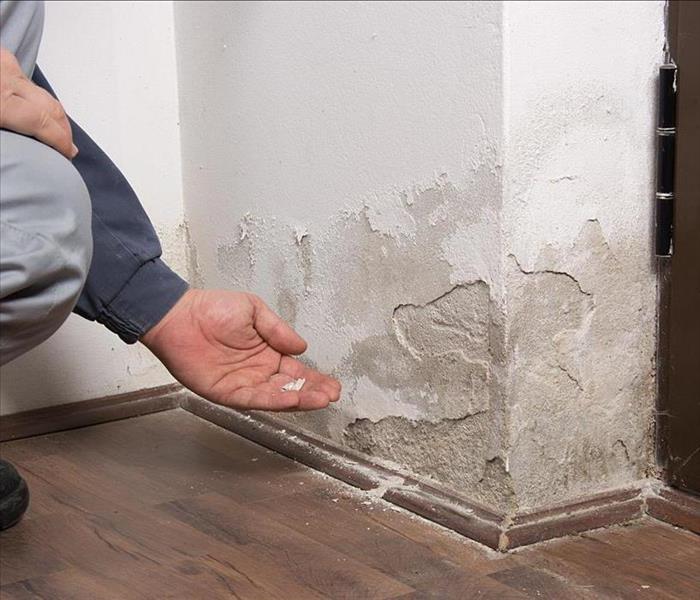Detecting Water Damage Behind Your Walls
7/12/2021 (Permalink)
 If you notice any of these signs in your home, you should seek the help of a professional to examine and fix the potential water damage or mold damage
If you notice any of these signs in your home, you should seek the help of a professional to examine and fix the potential water damage or mold damage
While there are many obvious causes of water damage, such as floods and burst pipes, there are other potential culprits, such as water leaks behind walls, that can cause significant amount of damage before a homeowner notice.
The excess moisture from hidden water leaks can be absorbed by the flooring, drywall, ceilings, and even wooden support beams which can cause serious structural damage to your home. Additionally, water leaks can lead to mold growth in the walls of your home, and if left unaddressed, can damage your home long before the leak is even discovered. The longer the problem goes undetected, the harder it will be to repair.
In order to prevent these mishaps, it is crucial that homeowners are aware of how to detect water damage behind your walls.
How To Detect Water Damage Behind Walls
Staining/Discoloration
If water is leaking behind the wall, eventually there will be a stain or discoloration on the surface. The shape of this stain is most likely going to be irregular. If the strain grows in size, it is often a sign that there is a hidden plumbing leak.
Visible Mold Growth
If there is visible mold growth on the outside of your wall, that is a clear sign that your wall has a water leak. This often will appear as a dense cluster of black or brown dots and can cause health effects. Remember, mold can still be growing behind your wall even if you don’t see it.
Musty Odors
If you can’t see any mold, you may be able to smell it. Be on alert for a humid or musty odors, that may be as a result of a water leak that was never able to dry fully. Mold growth also gives off a pungent musty odor. If there are any suspicious smells, be sure to have a water damage professional take a look.
Peeling and/or Bubbling Paint and Wallpaper
A telltale sign of water damage behind walls is a change in texture. Walls in front of a water leak will often form visible bubbles and the paint will be twisted or distorted, forming rips or bubble-like shapes.
Warped Walls
If sheetrock absorbs too much water, it can become easily malleable. In this case, often times the wall will appear bent or curved. If any warping is detected, it is a clear sign of water damage behind your walls.
Buckled ceilings and floors
If you notice any space between the floor or ceiling, it can mean that the wall is full of moisture. Any signs of buckling floors or celling can usually lead to a problem.
If you notice any of these signs in your home, you should seek the help of a professional to examine and fix the potential water damage or mold damage. At SERVPRO of Pompano Beach, our water damage restoration team has years of experience in quick and efficient repair. Contact us today for any and all of your water damage repair and mold removal needs.

 24/7 Emergency Service
24/7 Emergency Service